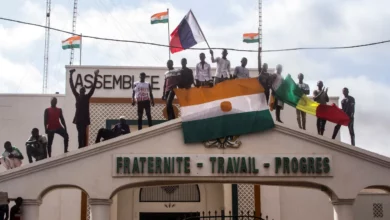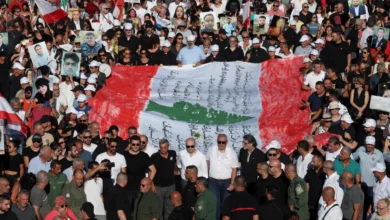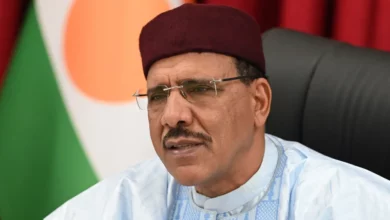
Last September has seen a drop in the intensity of protests in Egypt according to the the Egypt-based International Development Center, which said protests went down from 647 in August to 513 in the following month.
Released on Wednesday, the center’s Democracy Index revealed that the September rate involved an average of 17 protests daily (two protests every three hours). However, and according to the report, the drop coincides with a change in the protest map in terms of geography, protest organizers and the demands voiced.
Fridays saw the most intensive protests in September, the report says, noting that the Muslim Brotherhood supporters were primarily behind these demonstrations. September Fridays witnessed 153 protests, accounting for 30 percent of the month’s total number of protests, and 75 percent of total Muslim Brotherhood-organized events, which means the group relied heavily on Fridays for its activities.
The same month marked an increase of 25.34 percent, up from 18.7 in August, in protests over demands related to work environments. Factory and corporations workers topped the list of labour protests in September with 36 protests, teachers and educational workers coming second with 21 events, government employees (19 protests), drivers (11 protests), farmers (10 protests) and journalists (seven protests).
A noteworthy development in ٍSeptember was the drastic decline in protest activities by Brotherhood backers from 64 percent in August to 39.5 percent. Group members staged 414 out of 647 demonstrations in August, then 203 out of 513 in September. That’s approximately a 50 percent drop in its protest activities from the two previous months.
Prisoners and political activists equally staged eleven protests. Copts staged only four protests.
Economically and socially-oriented demands witnessed a hike in September to 54 percent of the month’s protest agenda, up from 35 percent in August, in face of political demands that accounted for 46 percent, down from 65 percent in August.
Thirty-five protests over government decision to lift fuel subsidies were staged in September, the report counts, while protests denouncing electricity cuts stood at 33. SIx protests denounced poor medical services.
Transportation services and relevant issues were behind several protests by drivers and passengers, reflecting the government’s failure to better control transportation tariffs roads improvement.
September had witnessed 237 politically-motivated protests, with the Brotherhood staging the majority of these events with 119 demonstrations demanding what the called “the fall of the military rule”. There were 55 protests demanding the release of political prisoners, 22 condemning the law regulating protests, eight denouncing terrorist attacks, six against security void and three against security mistreatment of lawyers and Copts.
The index also tackled the 28 various forms of peaceful and unpeaceful protesting during September, including 182 marches, 64 protests 61 vigils, 35 road blocking protests, seven sieges and invasion of facilities.
The report said the most notable protest action was the hunger strike by more than 1000 activists to demand the release of political prisoners and the modification of the protest law.
Two person committed suicide while a third threatened to suicide in protest, the report adds, reviving the 2010 scene in Egypt and Tunisia shortly before the Arab Spring revolutions, and reflecting the political and economic pressures endured by Egyptians.
Cairo topped Egyptian provinces with 118 protests (23 percent of the total number), which the report said denoted a belief that protesting at the capital would constitute an extra pressure on authorities. Alexandria came second with 56 protests, Giza (45), Sharqiya (32). Sinai Peninsula came at the bottom with only one protest.




